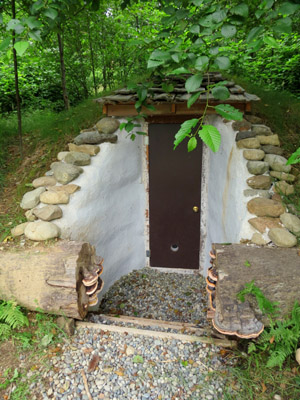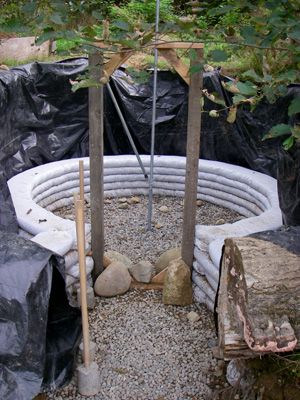
 2
2




Just a mom, trying to do best by her kids.
 2
2




Weeds are just plants with enough surplus will to live to withstand normal levels of gardening!--Alexandra Petri
 5
5




Invasive plants are Earth's way of insisting we notice her medicines. Stephen Herrod Buhner
Everyone learns what works by learning what doesn't work. Stephen Herrod Buhner
 3
3




'What we do now echoes in eternity.' Marcus Aurelius
How Permies Works Dr. Redhawk's Epic Soil Series
 3
3




This would be *really* difficult. If you've got lots sandy/clay soil to fill the bags with, but no large trees you want to thin or are standing dead, earthbag may be a better choice.Anne Miller wrote:I wonder if anyone knows of a price comparison between building a wofati vs building an earthbag structure, especially on relatively flat land.
Visit Redhawk's soil series: https://permies.com/wiki/redhawk-soil
How permies.com works: https://permies.com/wiki/34193/permies-works-links-threads
 1
1




Anne Miller wrote:While I know nothing about earthbag structures or a wofati, it seems to me that building a wofati would be the ideal structure for making a survival shelter/root cellar.
I wonder if anyone knows of a price comparison between building a wofati vs building an earthbag structure, especially on relatively flat land.
Just a mom, trying to do best by her kids.
 6
6




"You must be the change you want to see in the world." "First they ignore you, then they laugh at you, then they fight you, then you win." --Mahatma Gandhi
"Preach the Gospel always, and if necessary, use words." --Francis of Assisi.
"Family farms work when the whole family works the farm." -- Adam Klaus
 4
4




Invasive plants are Earth's way of insisting we notice her medicines. Stephen Herrod Buhner
Everyone learns what works by learning what doesn't work. Stephen Herrod Buhner
 1
1












 3
3




'What we do now echoes in eternity.' Marcus Aurelius
How Permies Works Dr. Redhawk's Epic Soil Series
 5
5





Visit Redhawk's soil series: https://permies.com/wiki/redhawk-soil
How permies.com works: https://permies.com/wiki/34193/permies-works-links-threads








 7
7







'What we do now echoes in eternity.' Marcus Aurelius
How Permies Works Dr. Redhawk's Epic Soil Series
 5
5




Visit Redhawk's soil series: https://permies.com/wiki/redhawk-soil
How permies.com works: https://permies.com/wiki/34193/permies-works-links-threads
 3
3




 4
4




JayGee
 5
5








Destruction precedes creation
 1
1




 1
1




Robert Yaklin wrote:i'll have to say "it depends". If I were to build a wofati where we live in the desert I would have to purchase the logs from a distant location that were grown in a much more distant location since the likelihood of finding locally grown trees that would provide suitable logs and in sufficient quantity and that needed to be cut down would be virtually nil.
Invasive plants are Earth's way of insisting we notice her medicines. Stephen Herrod Buhner
Everyone learns what works by learning what doesn't work. Stephen Herrod Buhner
 2
2










 1
1




Hooray for Homesteading!









|
Try 100 things. 2 will work out, but you will never know in advance which 2. This tiny ad might be one:
Homestead Pigs Course
https://permies.com/wiki/365748/Homestead-Pigs
|





